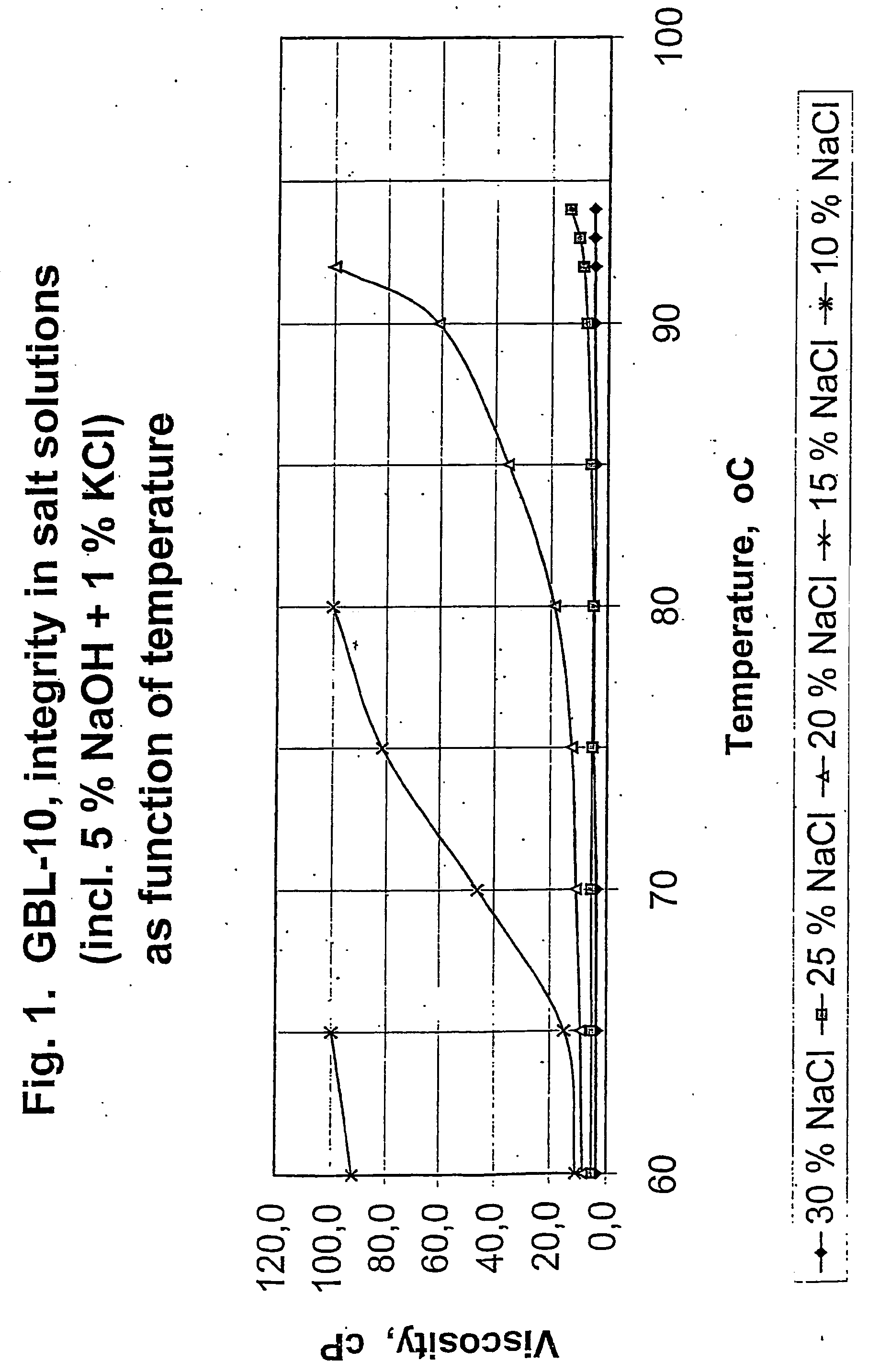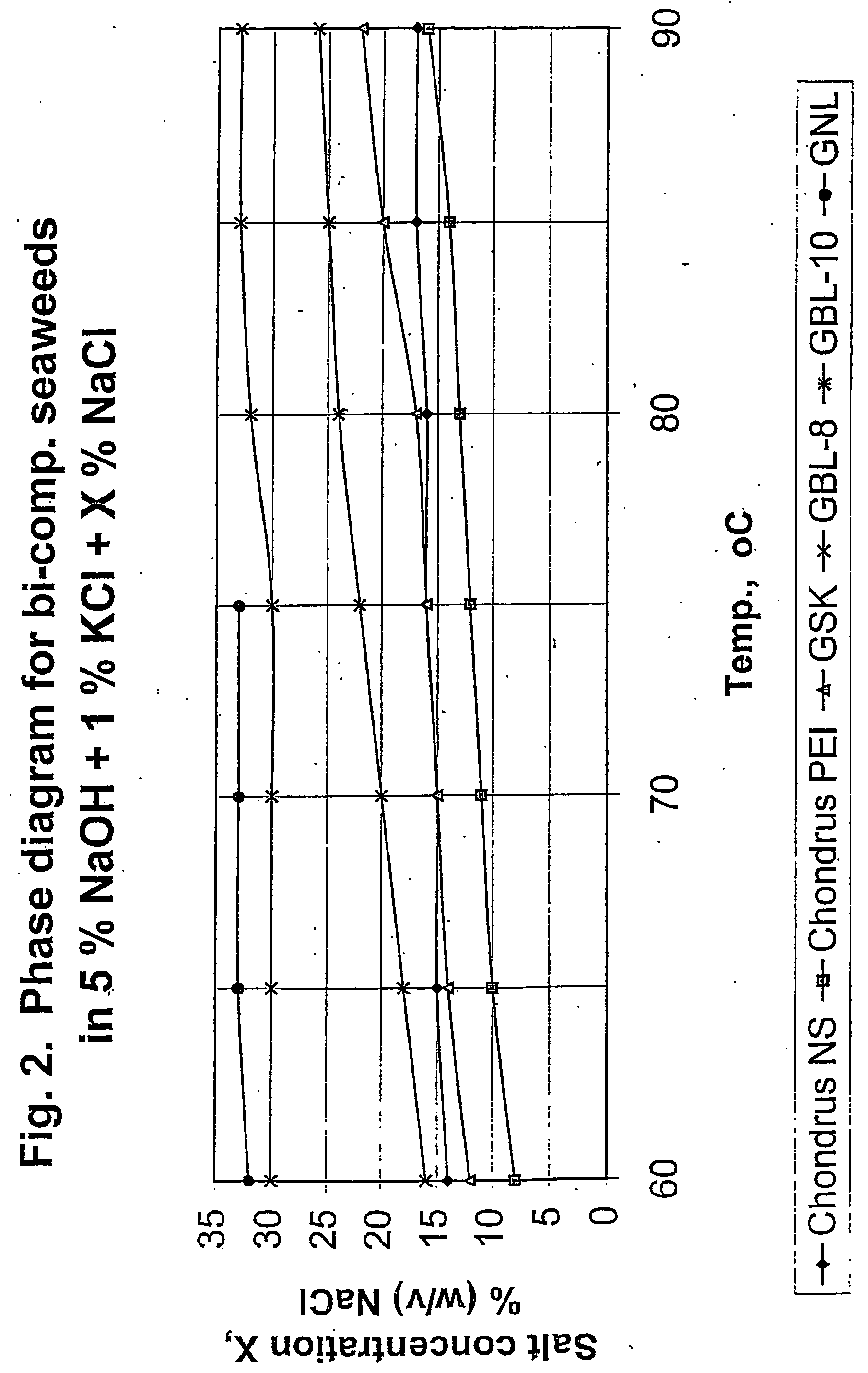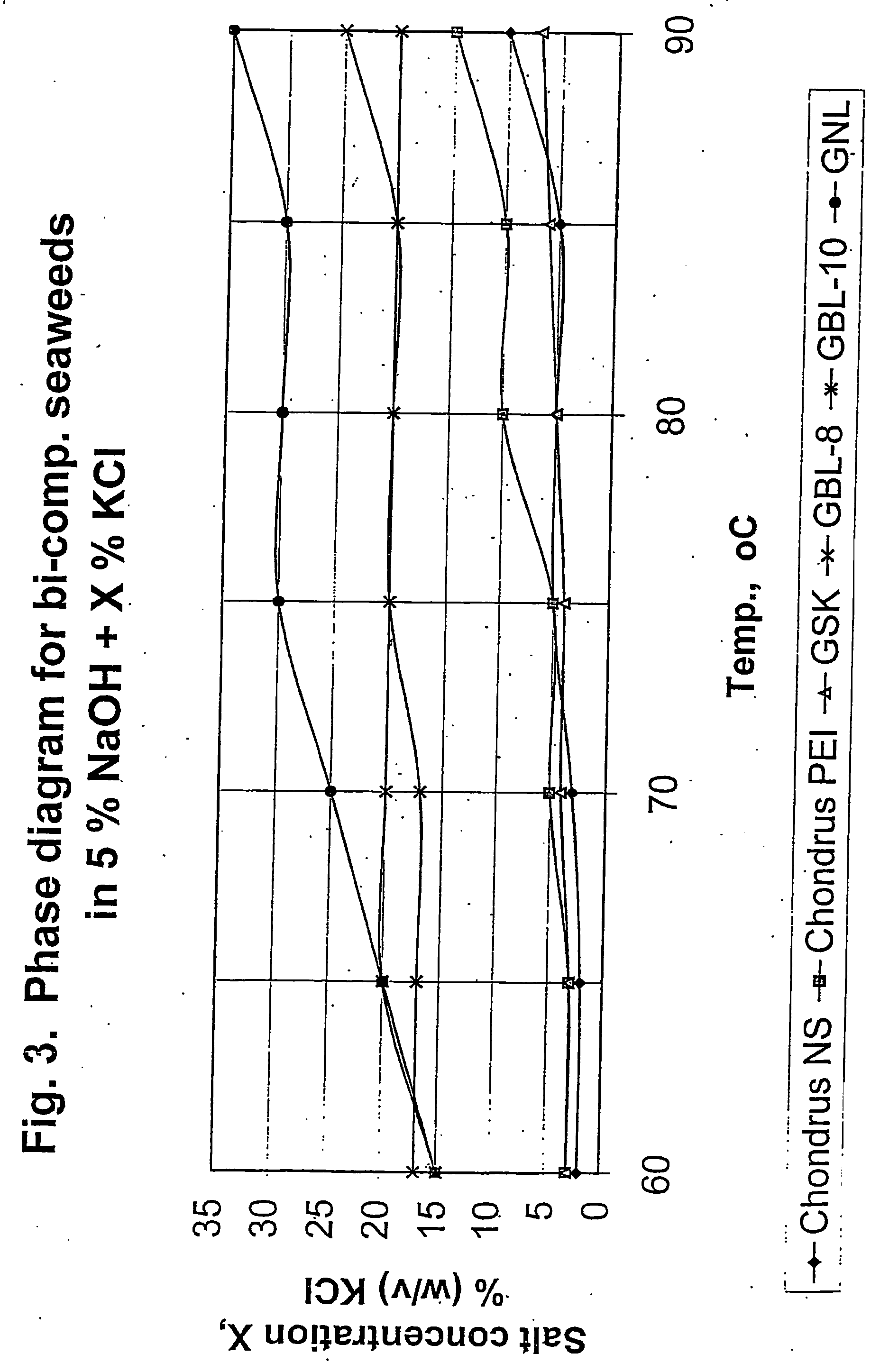Method for manufacturing and fractionating gelling and non-gelling carrageenans from bi-component seaweed
- Summary
- Abstract
- Description
- Claims
- Application Information
AI Technical Summary
Benefits of technology
Problems solved by technology
Method used
Image
Examples
example 1
This example illustrates how the Viscosity Diagram of FIG. 1 and the Phase Diagram of FIG. 2 were constructed.
Approximately 10 kg of GBL-10 seaweed (75-80% solids) was chopped into pieces of sizes of 2-4 cm. These pieces were mixed thoroughly.
20 l of a alkali stock solution containing 5% (w / v) NaOH and 1% (w / v) KCl was then prepared. This alkali stock solution was kept at room temperature. A series of solutions of NaCl was prepared on the basis of the above alkali stock solution. These NaCl solutions had a NaCl concentration of 0, 5, 10, 15, 20 and 25% (w / v) respectively. These solutions were also kept at room temperature.
For each of the above six alkali solutions 1.8 l thereof was filled into a 3 l beaker mounted on a heating plate provided with a laboratory agitator (crossbar propeller; Ø:50 mm) running at 240 rpm. Each solution was heated to 60° C. and 140 g chopped seaweed was added so as to obtain complete soaking of the seaweed. To each beaker was added NaOH / KCl / NaCl so...
example 2
This example will serve to explain the whole pilot scale trial procedure which maybe divided into the following three main steps: 1. Alkaline treatment. 2. Washing and lambda extraction from treated seaweed. 3. Work-up of the kappa and lambda fractions.
In this example, as in all subsequent examples, we used NaOH as the alkali and an alkaline treatment time of 2.5 hours. In the present example we used the seaweed GSK and used the salt NaCl as the major non-alkali salt.
1. Alkaline Treatment
An alkaline treatment liquid was prepared as a stock solution with 5% (w / v) NaOH, 23% (w / v) NaCl and 1% (w / v) KCl. The NaOH was fist dissolved at high temperature and subsequently the salts were dissolved. From the solution which was kept at room temperature, a suitable portion was heated to 63° C. in a cooking vessel and approx. 38 litre of it was deposited in the “reactor”. The reactor was a jacketed vessel with a total volume of approx. 50 litre, provided with a lid and with a conical b...
example 3
This example follows closely the procedure as described for example 2 with the following exceptions: the seaweed used is GBL-10. The results are seen in table 3. The swell factor of the wet SRC-kappa before lambda extraction was 6.8. We note here that the “kappa grades” of the RC-kappa are considerably higher than the ones of the co-extract. The total yields from the two compared processes seem to be approximately equal.
PUM
| Property | Measurement | Unit |
|---|---|---|
| Temperature | aaaaa | aaaaa |
| Fraction | aaaaa | aaaaa |
| Fraction | aaaaa | aaaaa |
Abstract
Description
Claims
Application Information
 Login to View More
Login to View More - R&D
- Intellectual Property
- Life Sciences
- Materials
- Tech Scout
- Unparalleled Data Quality
- Higher Quality Content
- 60% Fewer Hallucinations
Browse by: Latest US Patents, China's latest patents, Technical Efficacy Thesaurus, Application Domain, Technology Topic, Popular Technical Reports.
© 2025 PatSnap. All rights reserved.Legal|Privacy policy|Modern Slavery Act Transparency Statement|Sitemap|About US| Contact US: help@patsnap.com



